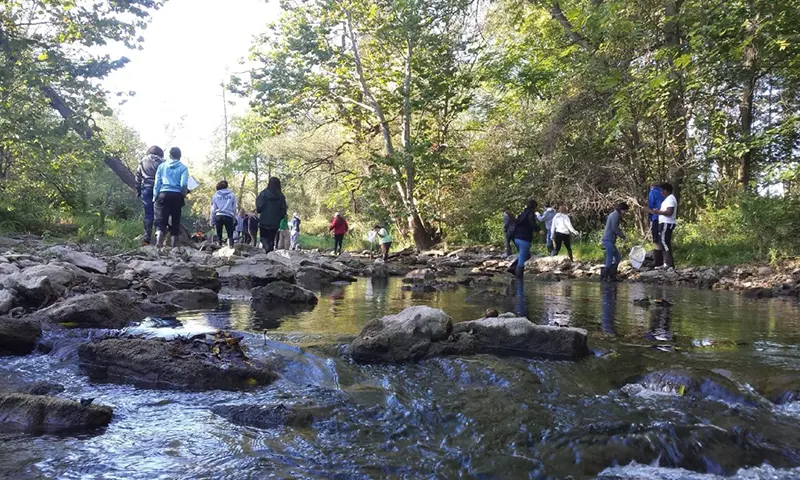EducationStream Monitoring

Stream Monitoring
The Finger Lakes Regional Stream Monitoring (FLRSMN) program trains educators to utilize local streams as outdoor classrooms and engage their students in volunteer monitoring and environmental stewardship. Monitoring protocols include techniques and tools for benthic macroinvertebrate biomonitoring, chemical analysis of stream water, physical assessment of in-stream and riparian conditions, and surveillance for invasive species. Whether educators use one or all of the FLRSMN protocols, students will gain a deeper understanding of the aquatic environment and overall stream health. Program participants contribute data to the FLRSMN community science database, which serves as a resource for FLI staff and the education community to track stream health over time.
Get Your Students Involved!
Educators attend an initial training session to become familiar with the monitoring protocols, tools, and techniques of the FLRSMN program. Following the training, educators are eligible to borrow a stream monitoring kit fully stocked with all the necessary materials for students to participate in volunteer monitoring. Through this program, students engage in place-based learning of waterbodies in their own community as an entry point for understanding foundational ecological concepts, identifying human impacts to the local environment, and being able to present solutions to complex environmental issues.
More Information
For more information, contact FLI Associate Director for Educational Programs Nadia Harvieux at harvieux@hws.edu.
Resources
- Database
- Stream Manual – updated (PDF)
- Protocol Resources
